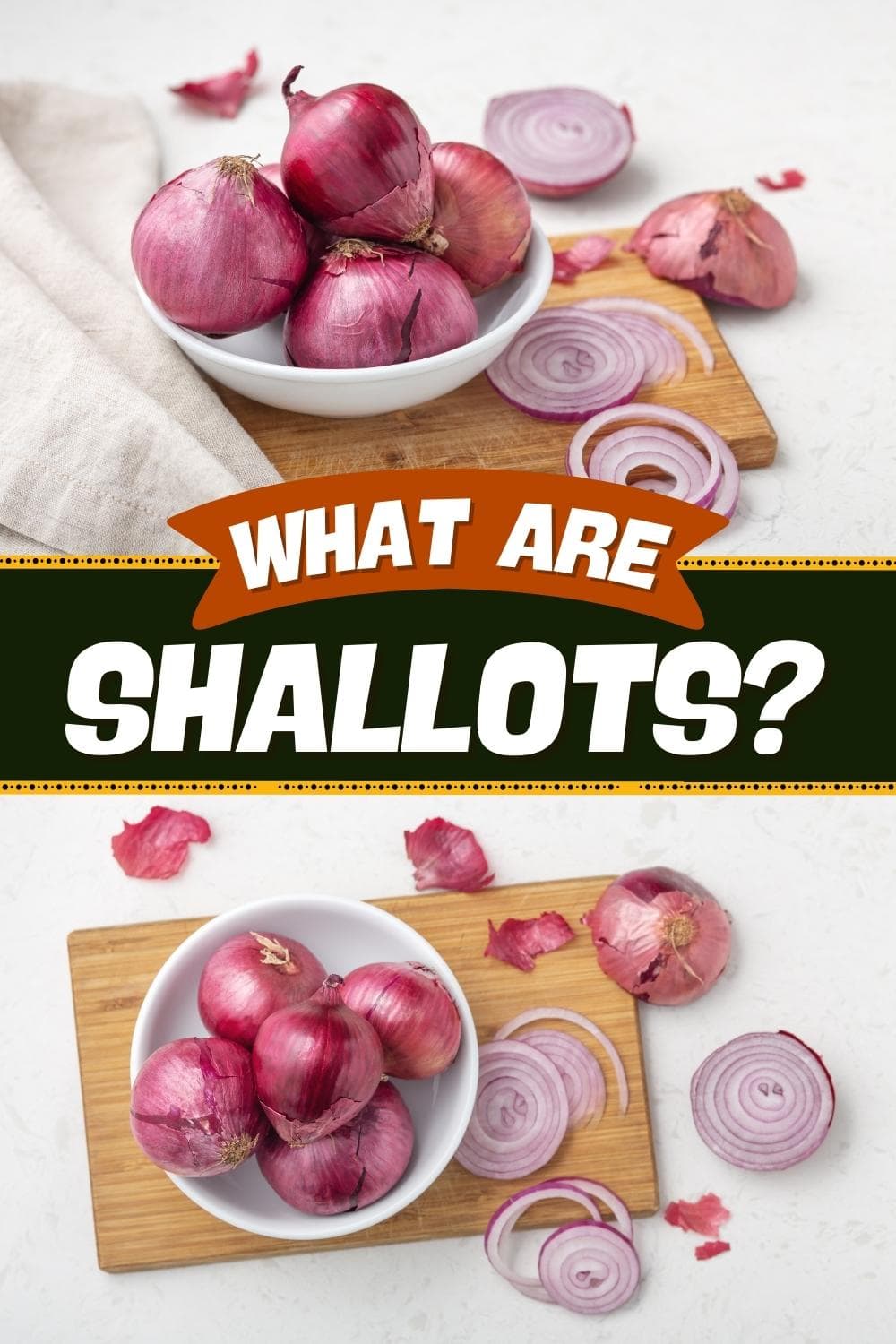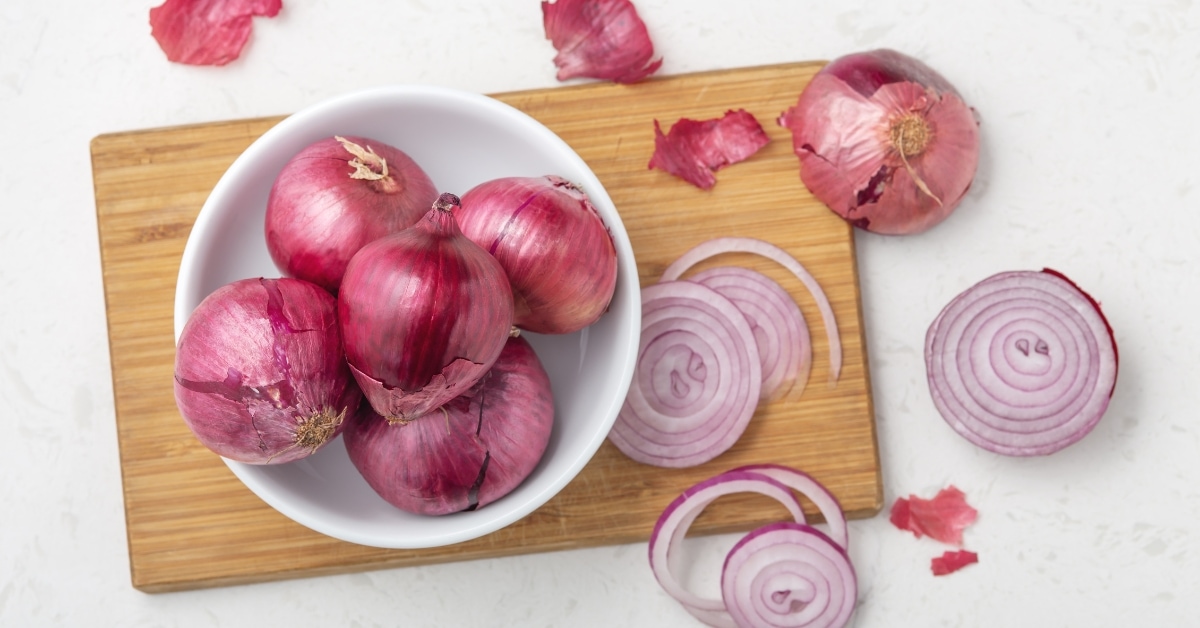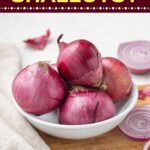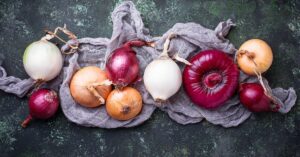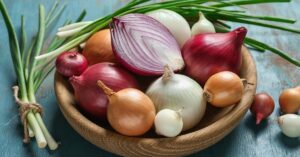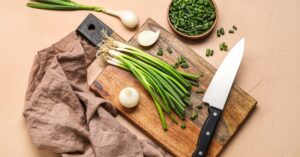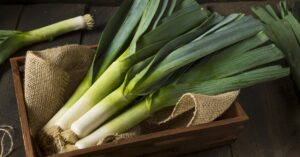What are shallots? You might have wondered this when you’ve seen them on an ingredients list.
It can be pretty intimidating when you come across unfamiliar terms in the kitchen.
When you’re a beginner cook, it’s common to feel anxious whenever something new pops up. Actually, who am I kidding?
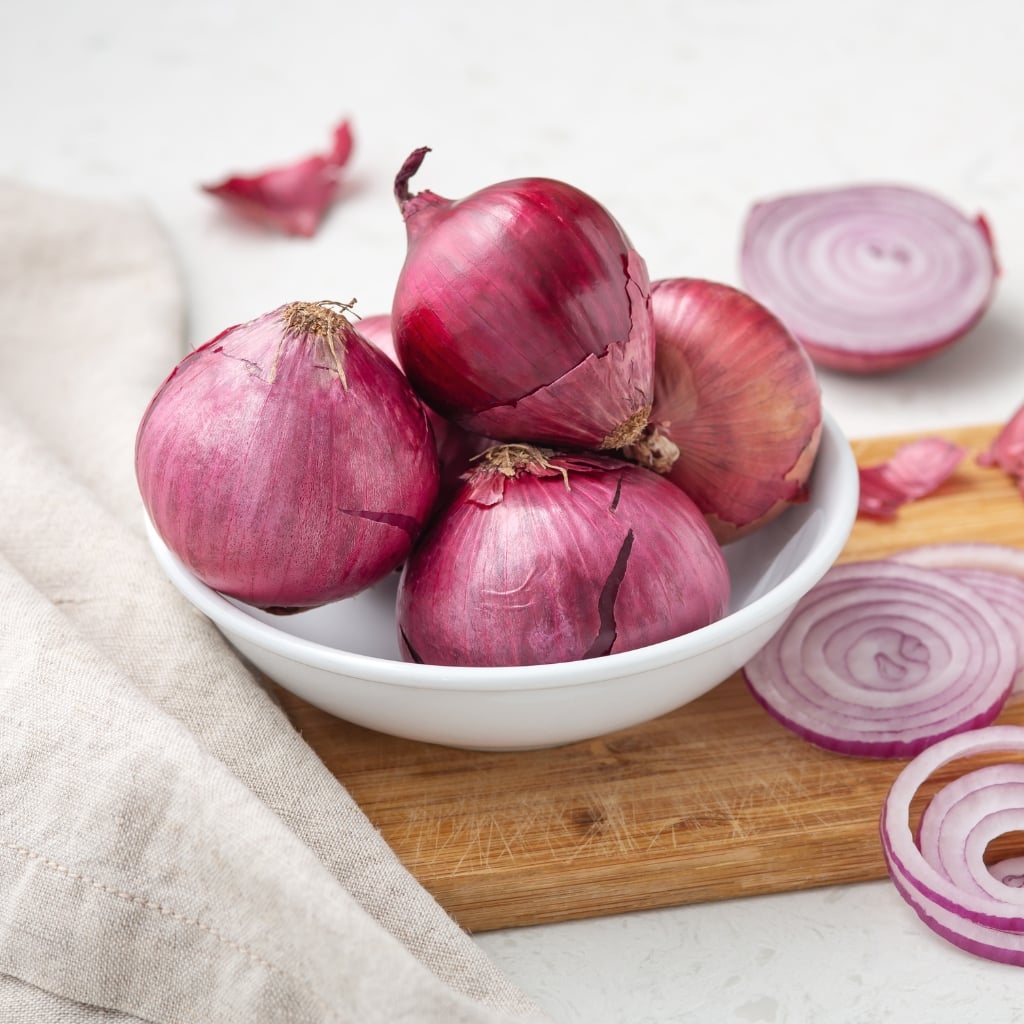
Seeing something new is always intimidating, even for experienced cooks!
Just because we’ve been cooking for years doesn’t mean we know everything.
Fortunately, learning something new often leaves you feeling empowered and confident.
So if you want to know more about shallots, you’re in the right place.
I’m about to tell you everything you need to know.
What Are Shallots?
(scientific name: Allium ascalonicum)
Shallots are incredibly versatile ingredients used for everything.
They add flavor to sautéed dishes and are essential to classic French sauces. They also appear frequently in vinaigrettes.
Of course, that doesn’t tell us what they are. So, let’s dive into it.
Like garlic and onions, shallots come from the Amaryllidaceae family.
In fact, they look like a smaller version of Vidalia onions. Botany even classifies them as onion cultivars.
The edible bulbs of shallots grow underground in small clusters.
They’re protected by a papery-thin husk or skin that you must remove before eating.
Finally, they are perennial plants that come in season in the summer months.
They have an earthy, umami-packed taste reminiscent of onions and garlic.
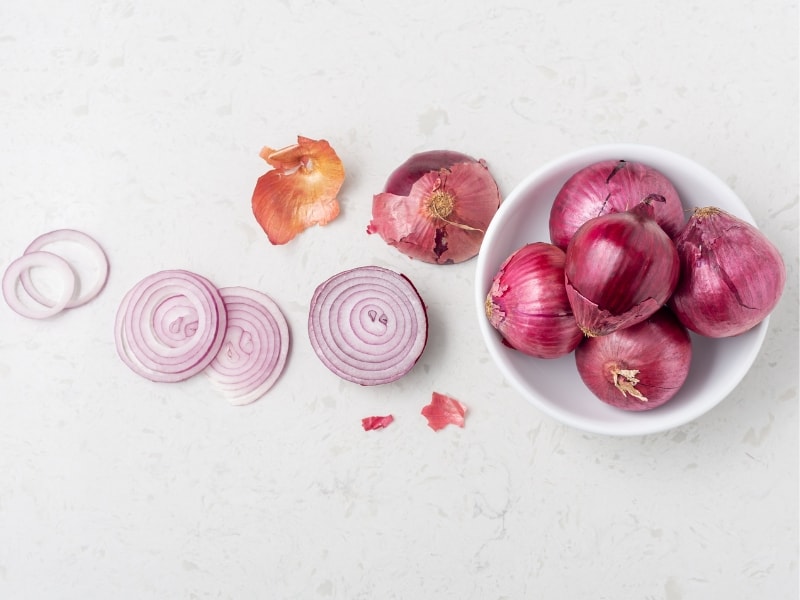
What Do Shallots Look Like?
As mentioned already, the edible bulbs of shallots look like small onions.
There are different varieties, each with its own distinct features.
For example, some shallots are lumpy and circular-ish (like whole garlic heads). Others are more teardrop-like.
They’re all covered in papery, thin husks ranging from purple to coppery-pink.
Their insides are purplish white (imagine red onions).
Their insides are also sectioned off into individual cloves, like garlic.
They’re layered and curved on one side and flat on the other.
Describing their appearance can be tricky.
Fortunately, there are plenty of pictures for you to check out for a better idea of how they look.
Describing their taste is much simpler.
What Do Shallots Taste Like?
Shallots taste similar to onions, leeks, and garlic. They’re earthy, umami-packed, and full of sweet heat.
They’re bolder than leeks but slightly milder than red onions.
When eaten raw, they are quite pungent and a little spicy.
When cooked well, they’re crazy delicious and will remind you of caramelized onions.
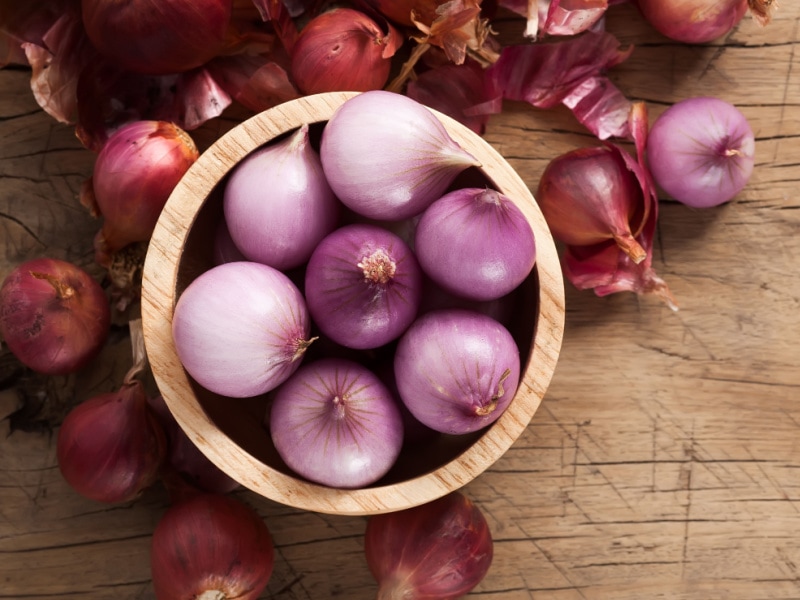
Shallot Varieties
There are several varieties of shallots, including the following:
- French gray shallots
- Pikant shallots
- Yellow (or golden) shallots
- Ambition shallots
- Banana shallots (also called echalions)
- Prisma shallots
- Jersey (or pink) shallots
However, you’ll typically only find three types in United States stores.
Those are echalions, Jersey shallots, and French gray shallots.
So, let’s talk a bit about them.
Echalion, or Banana, Shallot
These shallots are the hybrid offspring of onions and “regular” shallots.
This makes them larger than typical shallots and more onion-sized.
However, despite their larger size, they retain shallots’ milder, sweeter flavor. They’re kind of the best of both worlds.
Jersey, or Pink, Shallot
As their name would suggest, these shallots are pinkish-red in color.
These are probably the most popular of all the shallots sold in the United States.
You can find them in the produce section of your local grocery store practically all summer.
French Gray Shallot
Remember the “regular” shallot I mentioned in the Echalion section above? That’s this shallot.
In fact, some people consider French gray shallots to be the only “true” shallot variety out there.
They’re small, grayish in color, and have a sweet, mild, umami-packed taste.
They, too, are popular throughout the United States and other parts of the world.
Shallots vs. Onions (What’s the Difference?)
The first difference you’ll notice between onions and shallots is their sizes.
On average, onions are typically quite a bit larger than shallots.
Shallots also have a slightly different shape.
Most of them are more elongated than onions, slightly teardrop-shaped. (Though there are a few rounder varieties.)
You’ll also notice a difference when you cut into them. Inside, shallots resemble garlic more than onions.
They grow in clusters, and each shallot cluster is its own layered “clove.”
This clove-like anatomy means shallots will cook more quickly than onions.
They break down faster and are much softer. They also caramelize quicker and more thoroughly than onions.
As for taste, shallots are, on the whole, much milder than onions.
They still have that intense, umami goodness that makes them so delicious. But it’s less potent than it is in onions.
How to Cut a Shallot
Unfortunately, shallots are a bit more challenging to cut than onions.
Their small size contributes to this fact. However, the clustered way they grow is the bigger culprit.
Of course, most recipes that use shallots require them to be diced.
So, you must learn how to cut them without cutting yourself.
Here are the steps I follow when dicing my shallots:
- Ensure your knife is sharp. Cutting shallots with a dull knife is more trouble than it’s worth.
- First, slice the stem off the shallot. Discard it.
- Next, cut the shallot in half lengthwise. (Imagine splitting a peanut shell in half. Lengthwise is like that.) You should now have two distinct halves.
- Remove the papery husk from both sides of the shallot. It’s easiest to do this with a knife than to try to use your hands.
- Lay one side of the shallot flat-side-down on your cutting surface. Ensure whatever you’re using is stable and won’t move or buckle under pressure.
- Using just the tip of your knife, make two lengthwise slices on the shallot. Stop just before you get to the root end of the shallot. The two cuts should be parallel to one another.
- Slice the shallot multiple times across your original lines to dice it. Then, repeat the steps for the other half of the shallot.
If that still doesn’t make sense to you, head over to YouTube.
There are plenty of videos that should help you visualize the process better.
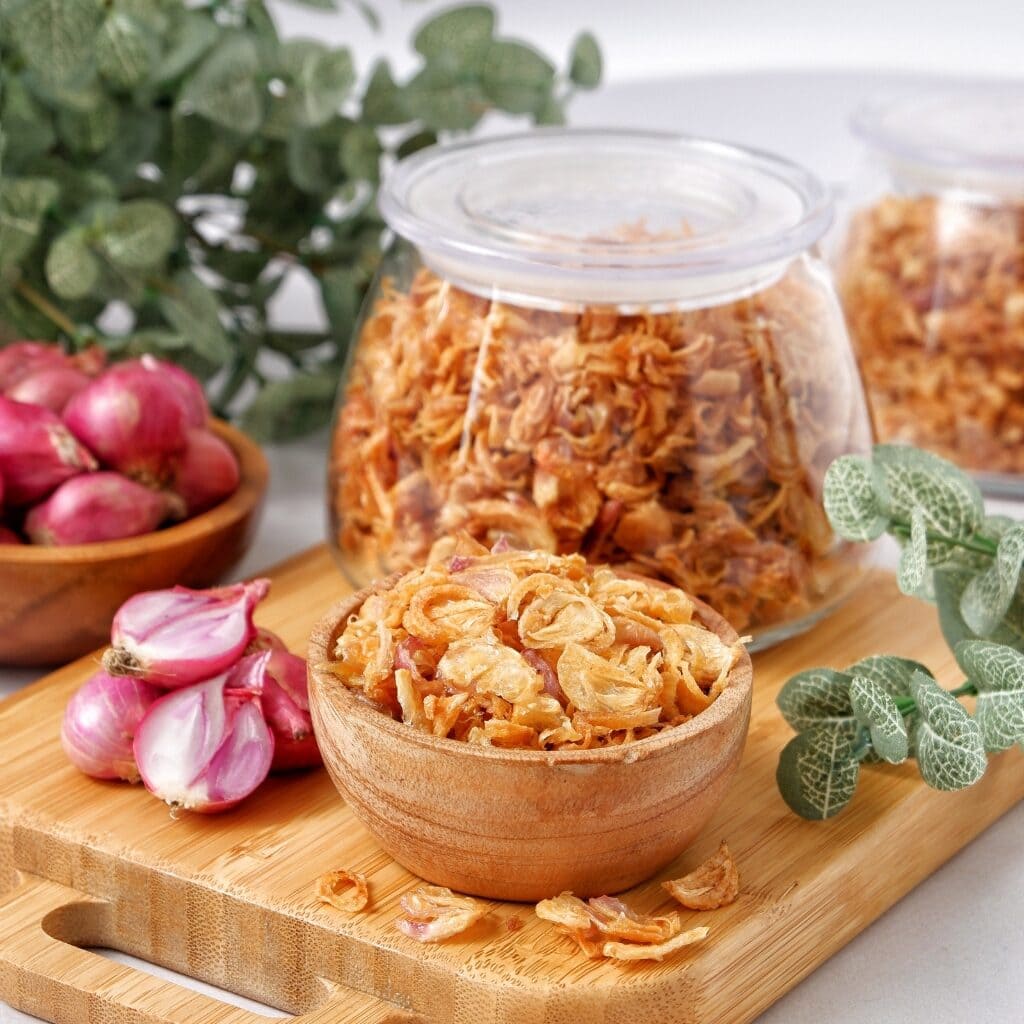
How to Cook with Shallots
There are plenty of ways to cook with shallots.
There are also plenty of ways to enjoy them raw! Let’s check out the options for raw shallots first.
Here are a few ideas for what you can do with raw shallots:
- Add them to salads
- Use them in vinaigrettes, particularly French vinaigrettes
- Put them on sandwiches
- Pickle them
- Add them to soups as a garnish
If you want to cook them, you’ll have other recipe options, too. You can fry, saute, slow-cook, or grill them.
They work well in recipes like pho, casseroles, and meat dishes.
You can even roast them whole and serve them alongside your favorite main courses.
Slow-cooked whole shallots are another phenomenal side dish option.
You can caramelize them or use them to add flavor to any dish.
Simply put, you can use shallots in practically any way you can use onions, leeks, or garlic.
There are many recipes where you can even substitute shallots for those ingredients.
Just remember: the onion flavor might not be as potent as it would be with real onions.
Shallot Substitutes
The great thing about Amaryllidaceae veggies is that they’re all practically interchangeable.
So, you have several substitution options if you have a recipe requiring shallots.
You can use any of the following to replace shallots:
- Yellow onions
- White onions
- Red onions
- Green onions/Scallions
- Leeks
- Garlic
- Chives
Now, the flavor of your dish won’t be exactly the same with those substitutions.
In most cases (save leeks and chives), shallots are slightly sweeter.
However, all the Amaryllidaceae veggies have that same earthy, umami potency. Here are a few things to keep in mind:
- Use yellow onions in place of shallots if you’re sauteing your veggies.
- I prefer scallions for the best raw flavor, as they aren’t as pungent as other onions.
- Red onions are another semi-decent substitute for raw shallots. They have a similar sweetness but are much more potent.
- Use less onion when swapping them out for shallots. (For example, if a recipe calls for one whole shallot, use only half or one-third of an onion.)
- If you’re roasting whole shallots, pearl onions make an excellent substitute.
- Minced garlic makes a good replacement for diced shallots.
Keep those things in mind, and you should be good to go on shallot substitutes.
